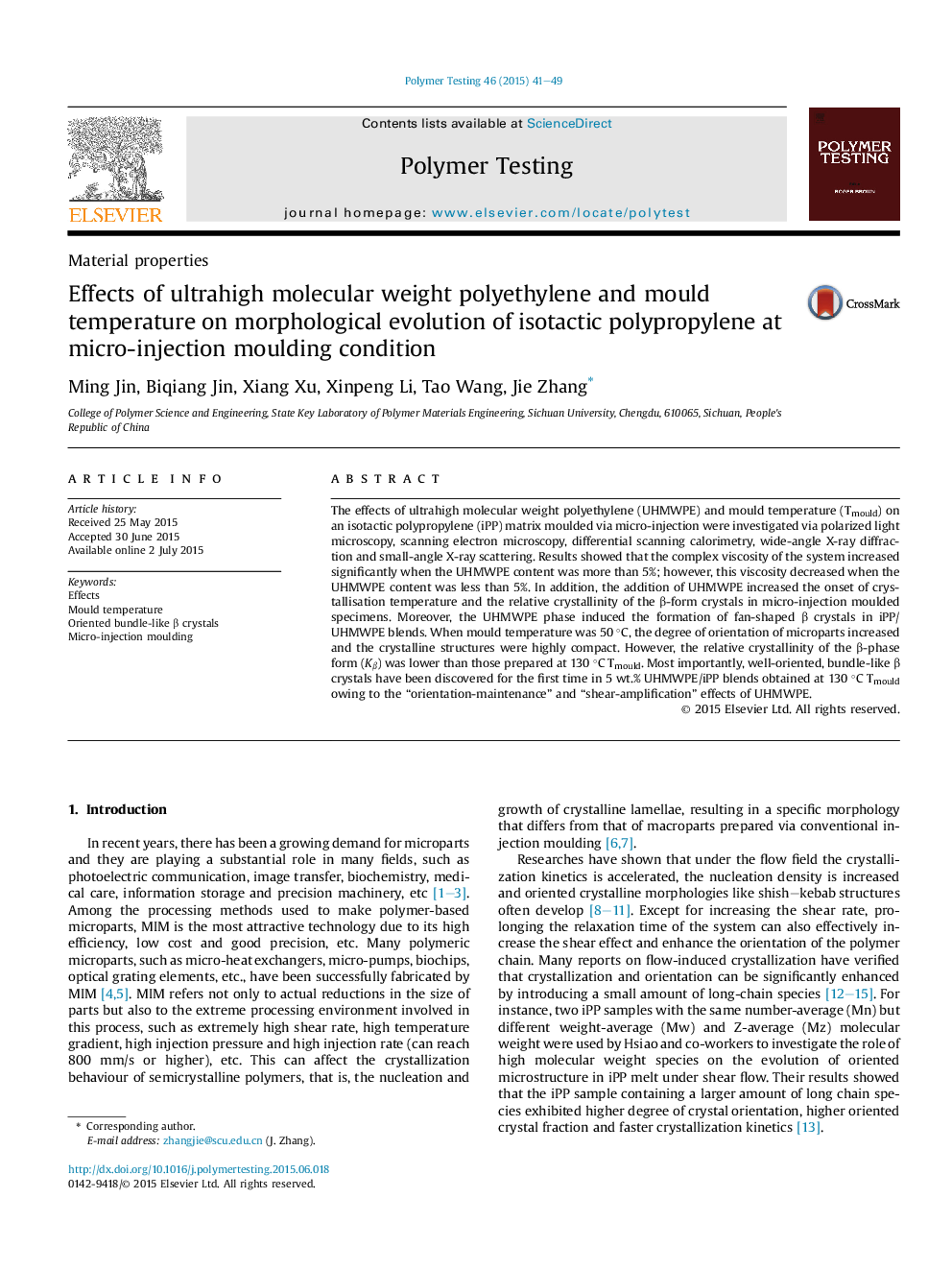| Article ID | Journal | Published Year | Pages | File Type |
|---|---|---|---|---|
| 5205974 | Polymer Testing | 2015 | 9 Pages |
Abstract
The effects of ultrahigh molecular weight polyethylene (UHMWPE) and mould temperature (Tmould) on an isotactic polypropylene (iPP) matrix moulded via micro-injection were investigated via polarized light microscopy, scanning electron microscopy, differential scanning calorimetry, wide-angle X-ray diffraction and small-angle X-ray scattering. Results showed that the complex viscosity of the system increased significantly when the UHMWPE content was more than 5%; however, this viscosity decreased when the UHMWPE content was less than 5%. In addition, the addition of UHMWPE increased the onset of crystallisation temperature and the relative crystallinity of the β-form crystals in micro-injection moulded specimens. Moreover, the UHMWPE phase induced the formation of fan-shaped β crystals in iPP/UHMWPE blends. When mould temperature was 50 °C, the degree of orientation of microparts increased and the crystalline structures were highly compact. However, the relative crystallinity of the β-phase form (Kβ) was lower than those prepared at 130 °C Tmould. Most importantly, well-oriented, bundle-like β crystals have been discovered for the first time in 5 wt.% UHMWPE/iPP blends obtained at 130 °C Tmould owing to the “orientation-maintenance” and “shear-amplification” effects of UHMWPE.
Keywords
Related Topics
Physical Sciences and Engineering
Chemistry
Organic Chemistry
Authors
Ming Jin, Biqiang Jin, Xiang Xu, Xinpeng Li, Tao Wang, Jie Zhang,
